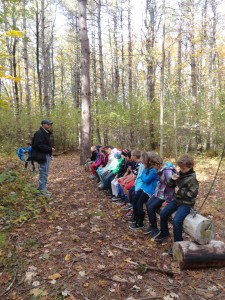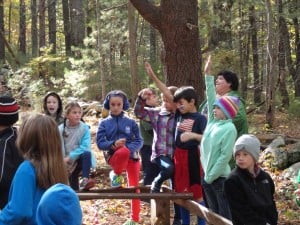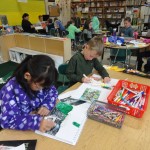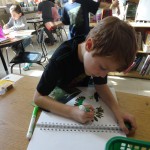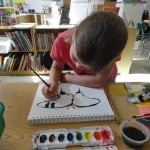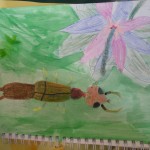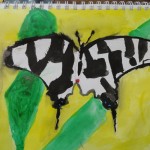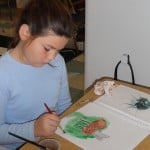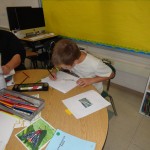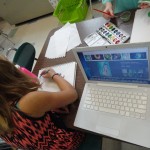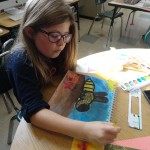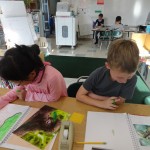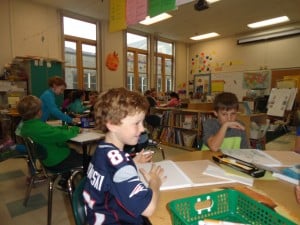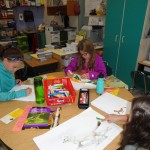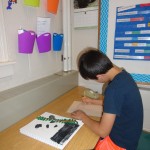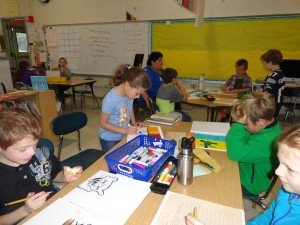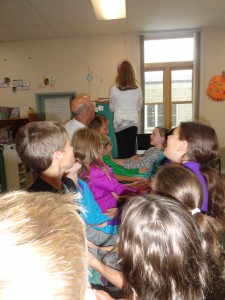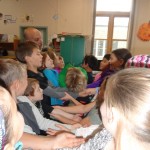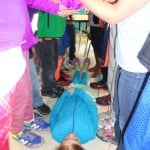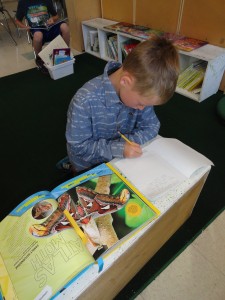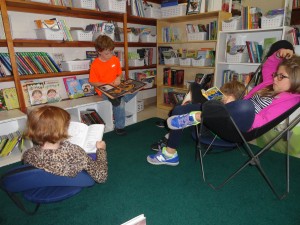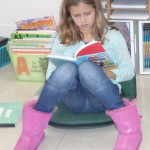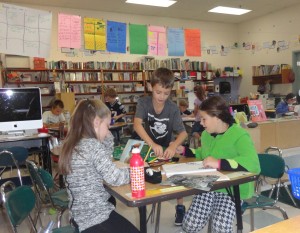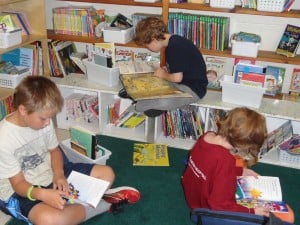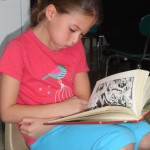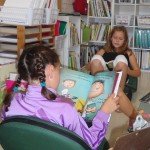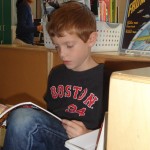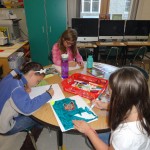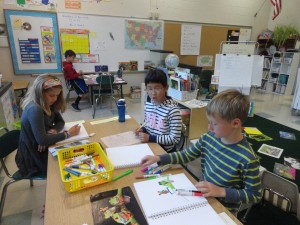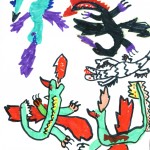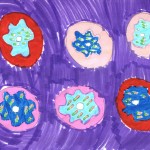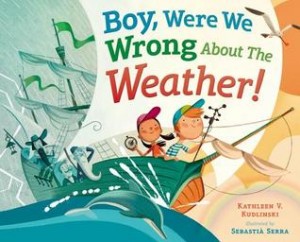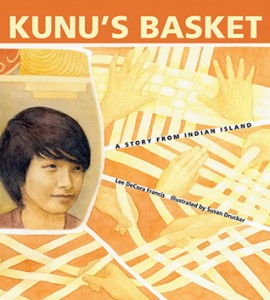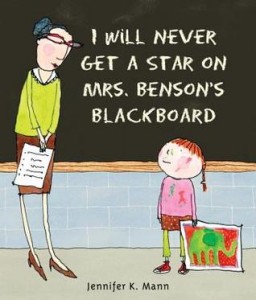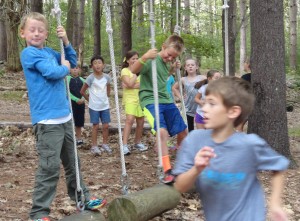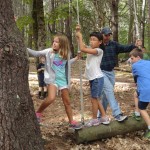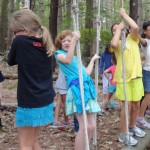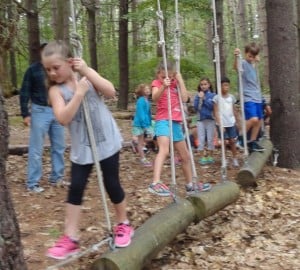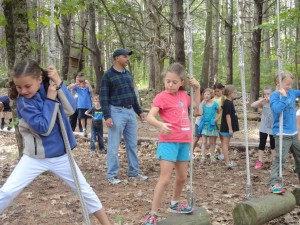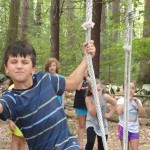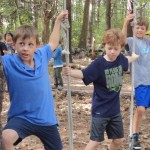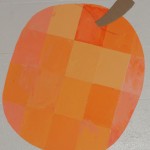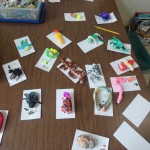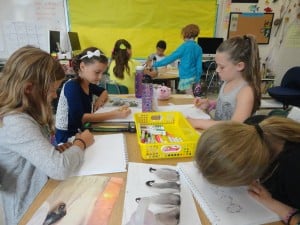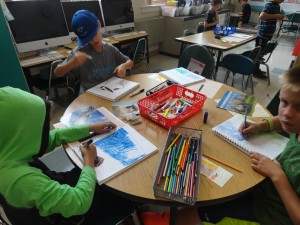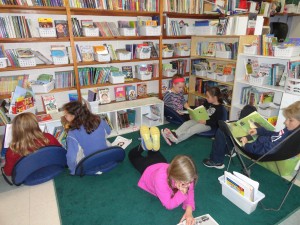 It has been a week full of excitement and waiting – apple picking, haunted hayrides, pumpkin carving, costume planning and finally trick-or-treating. In and around all that excitement at home, we explored the aspects of strong writing and begun informational writing to share our insect research. Most of the children posted writing and art on their blogs. We’ve been multiplying with larger amounts and we’ve been learning about habitats. There’s lot going on in 3E.
It has been a week full of excitement and waiting – apple picking, haunted hayrides, pumpkin carving, costume planning and finally trick-or-treating. In and around all that excitement at home, we explored the aspects of strong writing and begun informational writing to share our insect research. Most of the children posted writing and art on their blogs. We’ve been multiplying with larger amounts and we’ve been learning about habitats. There’s lot going on in 3E.
Multiplying and the Distributive Property
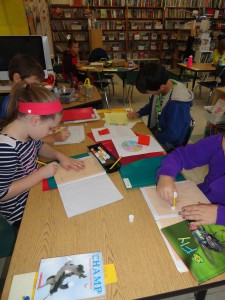 The children have been working to solve their problems with efficiency and accuracy. We’ve been working to organize our problem solving steps and follow a natural sequence working from the problem through to the solution. The children are doing a great job with this.
The children have been working to solve their problems with efficiency and accuracy. We’ve been working to organize our problem solving steps and follow a natural sequence working from the problem through to the solution. The children are doing a great job with this.
I wish I had saved some of the problems the children did from the beginning of the year to show them how far they have come. In September they were drawing out each set and writing a repeated addition sentence to solve problems like this:
Logan got a book full of sticker moustaches. There were eight pages in the book. Each page had five stickers on it. How many sticker moustaches were in the book at the start?
This week the children have begun using the distributive property to break amounts apart to solve for partial products that they then add together. Here’s a sample of a problem from this week:
Elias read for 23 minutes a day for 5 days. How many minutes did he read altogether? Over the weekend he read for 45 minutes each day. How many minutes did he read over the weekend? How many minutes did he read altogether in the week?
The class is becoming more confident when using multiplication. Many of them are surprised by how quick the work becomes – they are still checking, “do I need to write 20 + 20 +… or can I just write 20 x 5?” The class is being asked to use the strategy that is most efficient AND that leads them to accurately solving the problem.
Knowing Ourselves and Identifying Habits that Lead to Success
– Social Emotional Learning
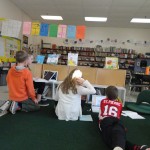
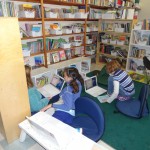 This week we finished graphing our eight different intelligences defined in Multiple Intelligence (MI) theory. After thinking about how we are each uniquely smart, we began to consider how we best learn as well. We’ve been exploring different parts of school learning to establish a clear understanding of our different capabilities at the start of third grade. We have been talking about how our habits and choices help us achieve goals. We have noticed from our shared readings that most people don’t do things easily the first time. Learning something new doesn’t usually happen in a snap or the blink of an eye. People work at things for a long time – years and years even. Snowflake Bentley didn’t get one picture of a snowflake in his first season of trying. We have noticed successful people try different ways and have help. Successful people have time, support and opportunity in order to achieve their goals. We notice that, just like the people in the biographies we have been sharing, we are most successful when we are confident and optimistic, patient and understanding, hardworking and persistent, flexible, and finally creative and resilient. Over the next week or two we are hoping to complete our goal-setting work and collect samples of our reading, writing and math work to share with our families in student-led conferences. One of the most exciting things we are learning is of our ability to grow and change our intelligence. We can do anything we want to do with effort, determination, confidence and time.
This week we finished graphing our eight different intelligences defined in Multiple Intelligence (MI) theory. After thinking about how we are each uniquely smart, we began to consider how we best learn as well. We’ve been exploring different parts of school learning to establish a clear understanding of our different capabilities at the start of third grade. We have been talking about how our habits and choices help us achieve goals. We have noticed from our shared readings that most people don’t do things easily the first time. Learning something new doesn’t usually happen in a snap or the blink of an eye. People work at things for a long time – years and years even. Snowflake Bentley didn’t get one picture of a snowflake in his first season of trying. We have noticed successful people try different ways and have help. Successful people have time, support and opportunity in order to achieve their goals. We notice that, just like the people in the biographies we have been sharing, we are most successful when we are confident and optimistic, patient and understanding, hardworking and persistent, flexible, and finally creative and resilient. Over the next week or two we are hoping to complete our goal-setting work and collect samples of our reading, writing and math work to share with our families in student-led conferences. One of the most exciting things we are learning is of our ability to grow and change our intelligence. We can do anything we want to do with effort, determination, confidence and time.
Team Estimation – Building Relationships
This week we had to work to solve two problems with Mr. Caron. First we had to use estimation skills along with cooperation to complete a bridge-like structure. The posts were in the ground and we had to figure out which lengths of wood fit between then. We had to complete that part of the challenge in a short enough time span so that we could find a way to help the whole class cross the bridge to the other side. We had to work quickly, but safely. We had to work patiently and cooperatively. We had to work logically and communicate our ideas so that all the parts of the challenge would be done. The class seemed to feel a real sense of accomplishment when they found a solution for each part of this challenge.
Bits and Pieces –
- We are enjoying Quinny and Hopper. It is realistic fiction with strong third grade characters that are helping us consider what it means to be a friend, what it means to treat others with respect and how important it is to talk things out.
- We are creating our insect displays, learning how to use print shop and preparing all our pieces to teach others about insects.
- We completed our first set of math fact checks. We tried all four operations. Division was hard!
